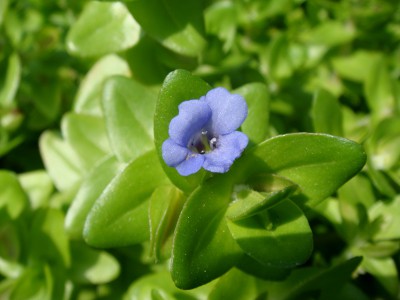Lemon Bacopa (Obolaria caroliniana)
Category: Pond Plants

Lemon Bacopa, also called the water hyssop, Herpestes caroliniana, Obolaria caroliniana and giant red bacopa, has the scientific name Bacopa caroliniana. Three other species of bacopa are Florida natives, and these have different scientific names. Lemon Bacopa is part of the Scrophulariaceae family.
Lemon Barcopa is an immersed plant, meaning it lives in water. These plants grow in fresh or brackish waters, depending on the species.
Bacopa is an excellent submerged oxygenator, making it popular in aquariums. Fish will take shelter in the plant. Lemon Bacopa is native to the southeastern United States, though it does not just live in the Carolinas. It is an invasive weed in South Korea. It grows in bogs, flooded areas and even very damp soil. It can grow with full sun or modest light, though with low light it will not bloom. If you plant Lemon Bacopa in your aquarium, it will need light.
Lemon bacopa is an herb and a perennial plant. It has thick, flexible leaves that release a lemon smell when crushed, hence the name. The leaves themselves are only an eighth of an inch wide and half an inch long. Leaves are arranged oppositely on the stem. Each plant grows to be two to six inches across. The plant will not grow more than ten inches above the surface of the water but may grow up to three feet to reach the water’s surface.
The plant prefers to grow above the water line but can grow in water, even blooming underwater occasionally though this causes the flowers to rot quickly. Lemon bacopa has blue flowers with four or five petals and a hairy upper stem. Lemon bacopa grows year round unless killed by frost. It grows very quickly, which is why it is classified as a weed in many areas. Do not release Lemon bacopa into a creek or storm drain, since it may become an invasive species as it already has in Asia.
The plant is usually propagated by cuttings. If planted underwater, it will grow to the waterline and just above it.

 Back To Category Pond Plants
Back To Category Pond Plants